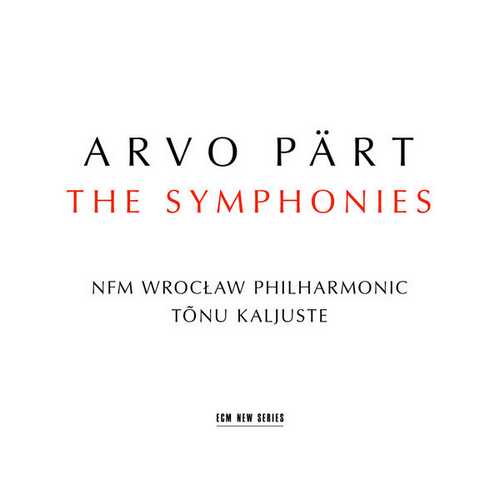

Composer: Arvo Pärt
Orchestra: NFM Wroclaw Philharmonic
Conductor: Tõnu Kaljuste
Format: FLAC (tracks)
Label: ECM
Catalogue: 4816802
Release: 2018
Size: 718 MB
Recovery: +3%
Scan: yes
Symphony No. 1
01. 1. Canons
02. 2. Prelude And Fugue
Symphony No. 2
03. I
04. II
05. III
Symphony No. 3
06. I
07. II
08. III
Symphony No. 4 ‘Los Angeles’
09. 1. Con sublimità. Marcando con maestà. Pacato
10. 2. Affannoso. Un poco più affannato
11. 3. Insistentemente. Con intimo sentimento Coda. Deciso
All four of Arvo Part’s symphonies are released on a single disc for the first time, newly recorded with the NFM Wroclaw Philharmonic under the direction of one of Part’s most trusted colleagues, Tonu Kaljuste. Each of the symphonies, as the great Estonian composer has noted, is a world unto itself. Heard in chronological order they also tell us much about Part’s musical and spiritual journey, and the very different ways in which he has exercised his craft. Forty-five years separate his Symphony No. 1 (“Polyphonic”) written in 1963 while he was still a student of Heino Eller, from his Symphony No. 4 (“Los Angeles”) written in 2008, by which time he was (and still is) the world’s most widely-performed contemporary composer, and one whose now famous “tintinnabuli-style” has become an immediately identifiable artistic signature.
In presenting the works together, Tonu Kaljuste considers them as “if they were a single grand symphony. I perceive Arvo Part’s creations as a biographical narrative, and hope that with the sound of the entirety of the music on this album we can refresh our memory of Part’s journey. It began with an entry into the neo-classical and serialist world, moved on with a composition that incorporated the use of collage, continued under the influence of early sacred music and – with the fourth symphony – arrived at a confession-like music, with a sound world supported by prayer, penitence and suffering.”